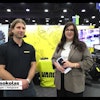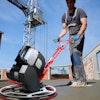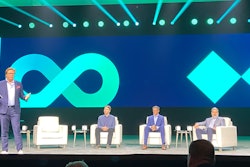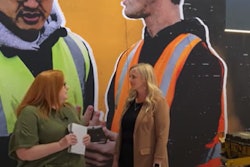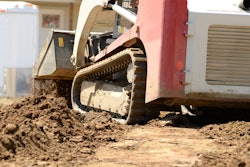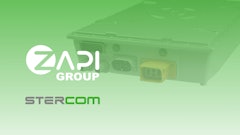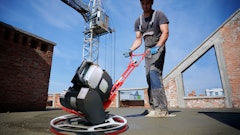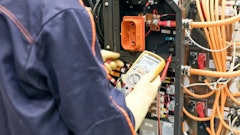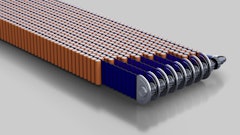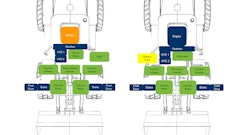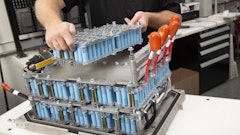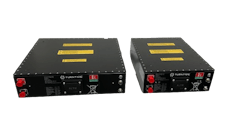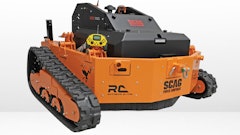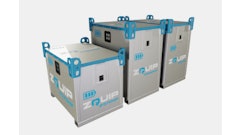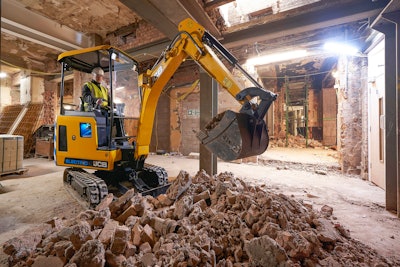
Europe can be viewed as a front-runner in the transition toward low- and zero-emission off-highway machinery. But why is this the case? There aren’t any technical advantages—many of the companies in the market are international—nor is there any significant difference in how the machines are used in Europe versus the rest of the world. The difference, to date, lies in the policy response of certain countries in Europe and how this in interacting with the R&D efforts of original equipment manufacturers (OEMs) and suppliers in that region.
 Figure 1. Comparison of the penetration of battery-electric excavatorsInteract Analysis
Figure 1. Comparison of the penetration of battery-electric excavatorsInteract Analysis
Public & Private Partnerships
The Big Buyers for Climate and Environment is a European Commission program run by ICLEI and Eurocities. The aim of the project is to encourage the adoption of sustainable technologies by supporting major public and government purchasing teams to buy those technologies. The Big Buyers program has supported a working group on zero emission construction sites across Europe. Examples include:
- Oslo has committed to ensuring that all public construction sites are zero-emission by 2025, and that all construction sites in the city are zero-emission by 2030. Fossil-free works has been a minimum requirement for public construction procurement in the city since 2017. Overall, Oslo has a target of reducing carbon dioxide emissions by 95% by 2030, compared to 2009 levels.
- All public construction sites in Copenhagen must be carbon neutral by 2030. The city’s own substantial fleet of off-road mobile machinery must be fossil-free by 2025. Work has begun on a series of civil works and construction projects in the city, where all machines up to 2.5 tons must be electric, and machines above that size should preferably operate on either electric or biofuels.
- Helsinki is striving to become carbon neutral by 2035. In line with the Finnish green deal, all public construction sites should be 100% fossil-free by 2025. By the end of 2030, this will be extended to include machinery and heavy vehicles that travel to and from sites. In addition, the city made the decision that all new infrastructure sites and roadworks will be fossil-free and low-emission. The value of construction contracts affected by these initiatives was approximately €143 million in 2021.
Specific “mega-projects” are also driving a shift toward the use of low- and zero-emission equipment in Europe. High-speed rail 2 (HS2), which is a major U.K. project to create a high-speed rail network from London to Birmingham, has a roadmap toward net zero. HS2 has announced that the project aims to be net-zero carbon from 2035, with the target of achieving its first diesel-free construction site in 2022, and all its construction sites being diesel-free by 2029.
Innovations on its first diesel-free site include one of the U.K.’s first 160-tonne, emission-free fully electric crawler cranes, the use of biofuels (hydrotreated vegetable oil) to power plant and machinery on site, an electric compressor, and access to main power on a 100% renewable energy tariff.
OEMs have also trialed electrified and low-emission vehicles successfully. Volvo Construction Equipment has been one of the most advanced in this, creating an electric site research project with its customer, Skanska. The research project, dubbed Electric Site, aimed to electrify each transport stage in a quarry—from excavation to primary crushing, and transport to secondary crushing—although a negligible amount of diesel power will still be used. Tests showed a 98% reduction in carbon emissions, a 70% reduction in energy costs and a 40% reduction in operator costs.
Perhaps, though, the most extensive development of projects involving electrified machinery have been in the Netherlands. The Emisseloos Netwerk Infra (ENI) or Zero-emission Infrastructure Network is an organization of multiple companies across the construction industry with the goal of promoting the widespread adoption of zero-emission equipment in the 2026 to 2030 timeline. ENI has demonstrated how electric equipment can be integrated into small and large projects, including successful charging approaches and technical feedback, for example, on the correct battery size required in an excavator to meet its expected duty cycle.
OEMS & Suppliers
Although many suppliers and OEMs are global, it is also fair to say that they have focused development efforts and product launches in Europe as there is more market demand for electrified solutions. This becomes a virtuous circle because fleets and operators get experience with the technology, learn about its advantages and disadvantages, and suggest feedback to further enhance the products. This speeds up market acceptance, driving more sales, feedback and better products.
While calling out a leader is difficult, OEMs like Volvo and JCB have brought multiple electrified models to the European market since 2020. European suppliers like Danfoss, Bosch, Zapi Group, Forsee and Turntide Technologies have developed technologies—batteries, motors and power electronics—specifically for the off-highway market. These capabilities have helped these companies become leaders in their markets.
Can the U.S. Catch up?
What is clear is the importance of policy support in driving the adoption of electrified off-highway machinery. In the U.S., the direction of policy isn’t fully clear, and this causes a lack of certainty over which technologies will be used to reduce emissions and improve sustainability.
This lack of policy is also compounded by a lack of funding. Other than the Clean Off-Road Equipment Voucher Incentive Project funding program from CALSTART, there has been little in the way of financial support for the purchase of electrified machinery in the U.S. Funding is necessary because the upfront cost of electrified machinery is not positive when compared with diesel machinery.
For the U.S. market to catch up, the lack of funding needs to change. It’s hard to comment on policy, but many manufacturers are optimistic that funding from the Inflation Reduction Act will support the introduction of low- and zero-emission construction equipment. If this happens, the U.S. market should be optimistic about catching up with Europe.

